Have you recently installed a pool heater, and you’re now wondering about the size of the propane tank that best matches it? Wonder no more, for we researched this question and have the answer right here for you.
Large propane pool heaters will normally need a 500-gallon tank. A 250-gallon tank, on the other hand, is sufficient for small to medium size pool heaters.
Read on if you want to get specific measurements for the propane tank that you need. Additionally, we have some tips that you might find useful in making decisions related to your propane pool heater.
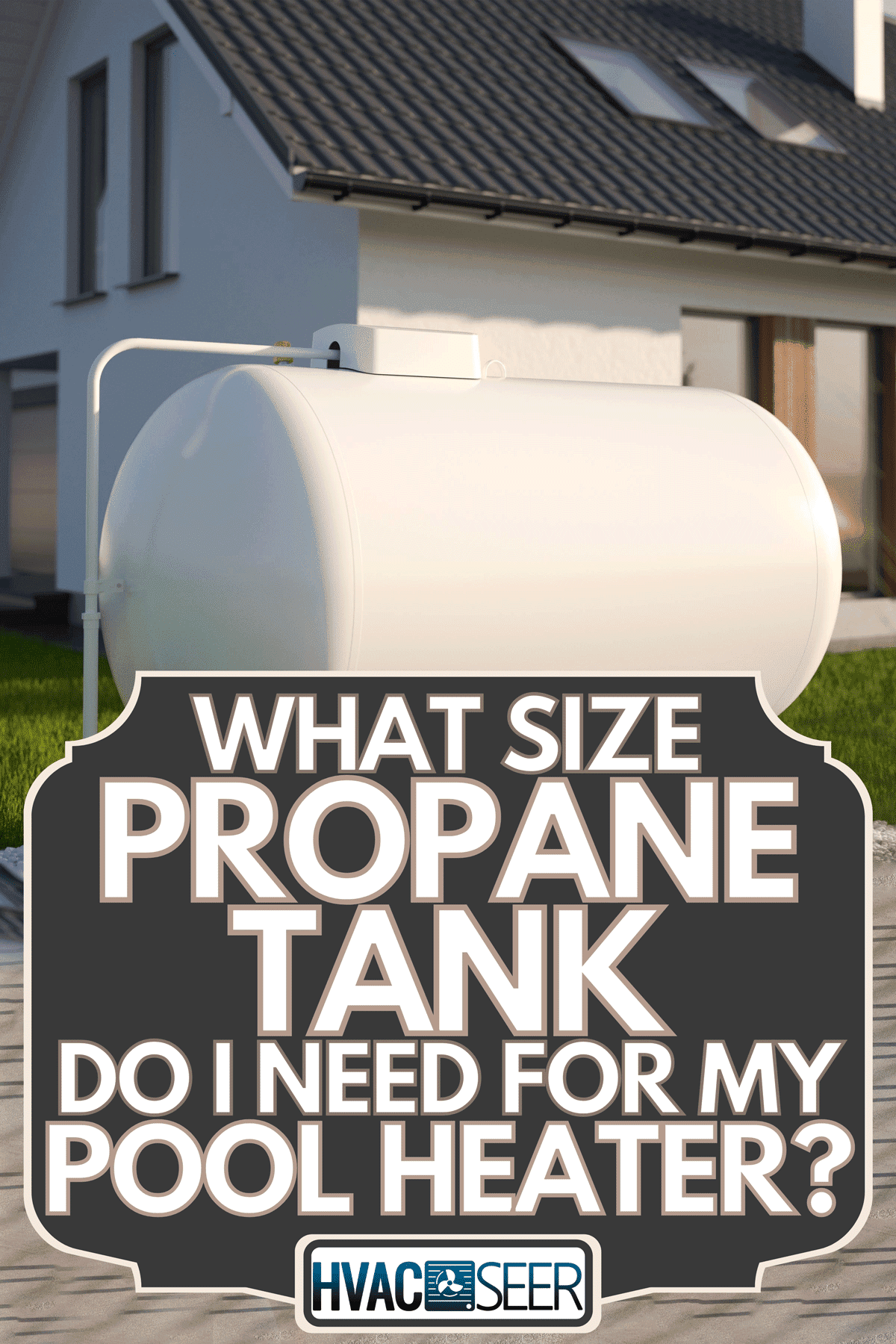
What size propane tank do I need for my pool heater?
An average pool heater can consume one gallon of propane per 100,000 BTUs of heat produced. Pool heaters are commonly 300,000 or 400,000 BTUs. Your pool heater will consume four gallons of propane per hour if you’re using a 400,000 BTU pool heater.
Multiply that with the number of hours that you plan to use your pool heater between tank refills. The number should give you the propane tank size that you need to install.
There are propane tanks that can be buried underground so that a large propane tank wouldn’t be much of an eyesore.
How do I find out the size of my pool heater?
Knowing the size of your pool heater is important because it directly affects the size of the propane tank that will supply it with fuel to heat your pool. Fortunately, it is easy to know the capacity of most pool heaters based on their model number.
A pool heater with a 400 in its model number will likely be a 400,000 BTU pool heater. If your pool heater does not have a model number, you can get the model number and check the manufacturer’s website to get the exact specs of your pool heater.
How much does it cost to heat a pool with propane?
Use the information above to get the expected cost of heating your pool with a propane pool heater. If you have a 300,000 BTU pool heater that consumes three gallons of propane per hour, simply multiply this with the per-gallon price of propane in your area.
For example, if propane costs $2.50 per gallon, you’d be spending $7.50 per hour on propane if you’re using a 300,000 BTU pool heater.
Weather conditions can affect pool heating costs
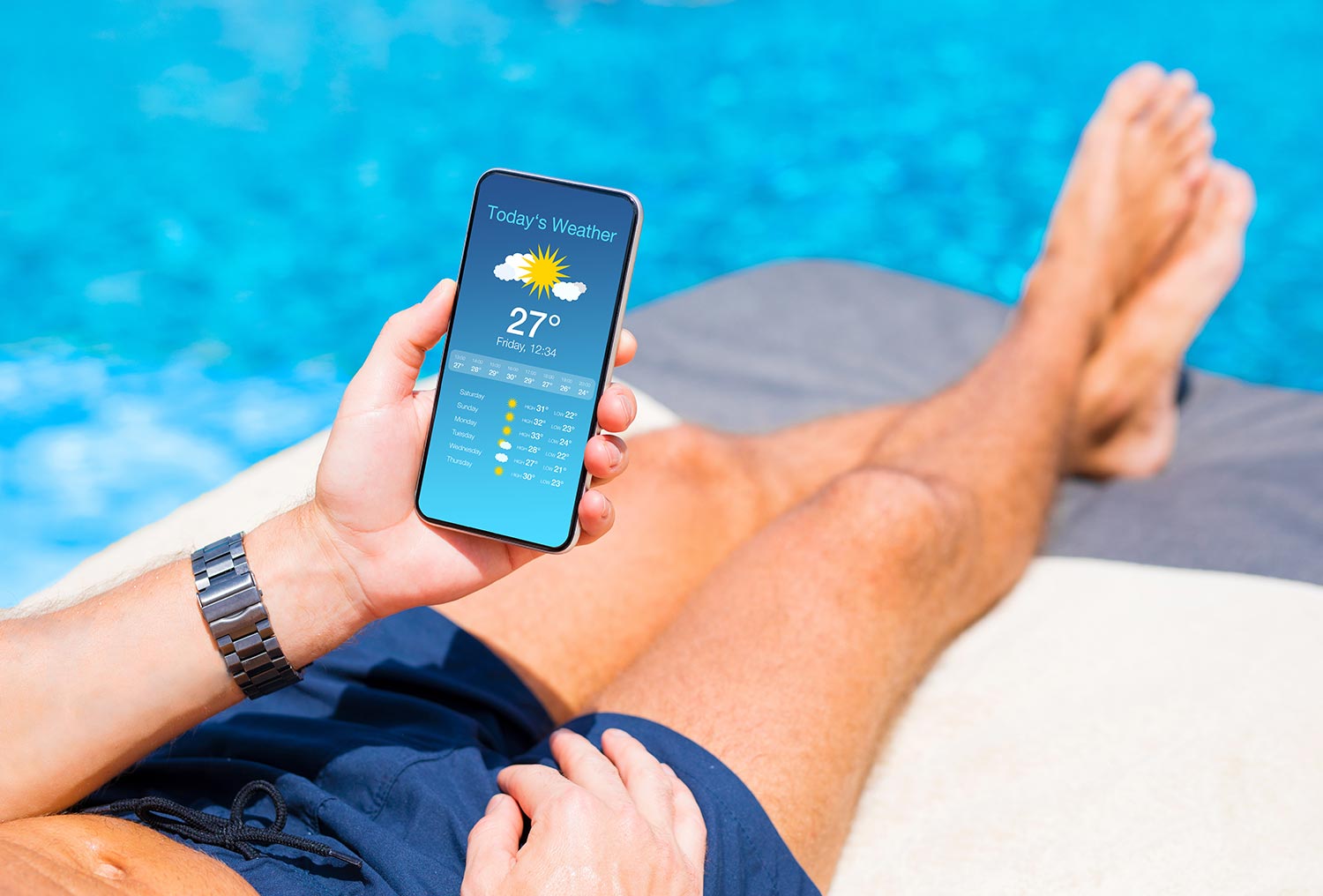
You must take note, however, that the weather in your area can greatly affect the amount of propane that you need. An increase in propane usage equates to increased costs.
It will take longer to warm the pool during cold months compared to warm months. The total cost of heating your pool will thus be higher for cold months and lower for warm months.
Propane pool heaters are efficient
According to Energy Saver, the U.S. Department of Energy's (DOE) consumer resource on saving energy, current gas pool heaters have models that are 89% to 95% efficient. Higher efficiency means that there is less wasted fuel—fuel that is not converted to heat.
Another way to look at it is to deduct the efficiency rating from 100. The result is the percentage that you pay but does not get anything.
Thus, an 80% efficient pool heater means that you do not get anything from 20% of what you paid. If you paid $100 for propane, you did not gain anything from $20 of what you paid.
Advantages and disadvantages of propane pool heaters
Propane pool heaters require less propane to heat the same amount of water compared to gas or electric pool heaters. Additionally, it costs very little to maintain. All it needs most of the time is an annual check to make sure that there are no leaks or problems.
What is the perfect pool temperature?
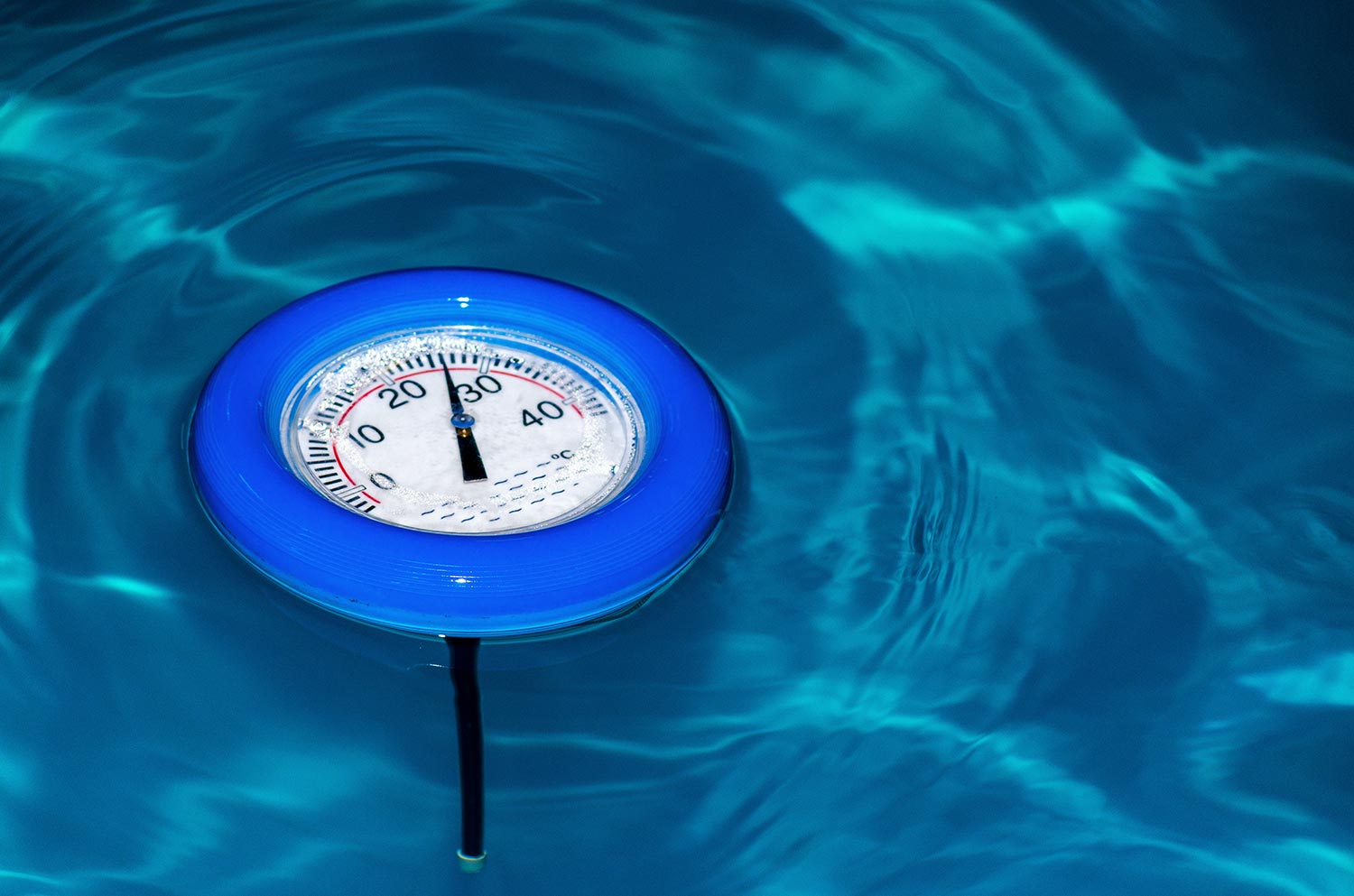
The best pool water temperatures run anywhere between 78 degrees and 82 degrees.
A pool water temperature that is colder than 78 degrees can make you shiver when you exit the pool. On the other hand, a pool water temperature that is hotter than 82 degrees might leave you feeling like you’re taking a bath.
A temperature of 80 degrees is generally warm enough for kids and senior citizens to enjoy dipping in the pool--leaving them invigorated and refreshed.
The Inkbird IBS-P01R Wireless Floating Pool Thermometer makes it easy for you to determine the pool's temperature. Check it out on Amazon via this link.
Understanding Propane Tank Placement Laws
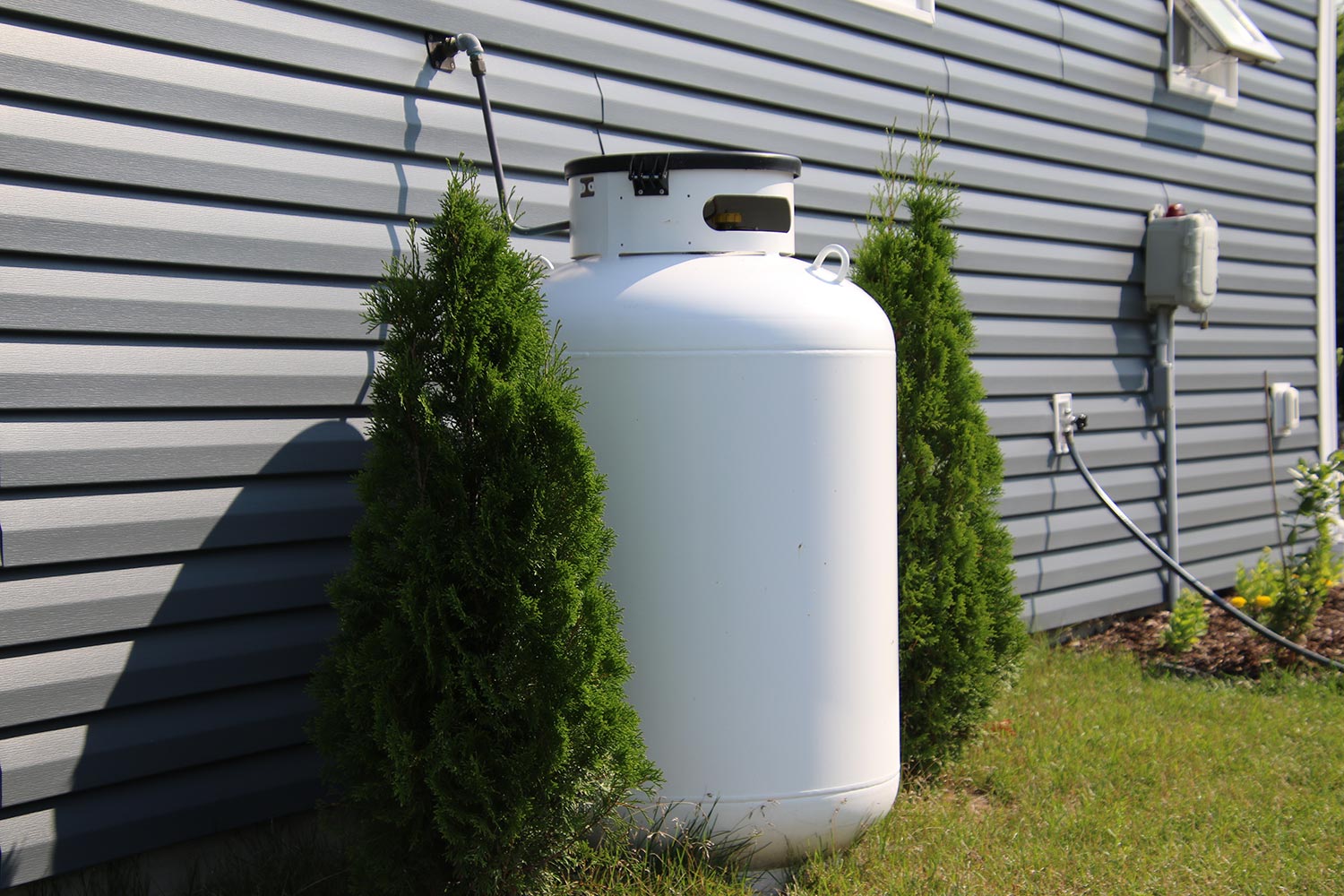
Once you’ve decided on the size of propane tank to install for your pool heater, the next step is to find out where to best install it. There are federal, state, and local laws that govern where propane tanks can be installed relative to nearby buildings, driveways, awnings, house or building entrances, property lines, and more.
Propane Tank Placement Regulations by Size
The sections below detail the placement regulations based on the capacity of the propane tank.
100-gallon propane tanks
These tanks are popularly used for appliances and equipment that require a substantial amount of fuel but are not used daily. It could be used for an emergency generator or heating outdoor swimming pools.
100-gallon propane tanks are required to be installed at least five feet away from the opening of a building. It should be 10 feet away from any source of ignition.
Also, a maximum of four 100-gallon propane tanks can be placed next to each other within a single property if they adhere to placement restrictions.
500-gallon propane tanks
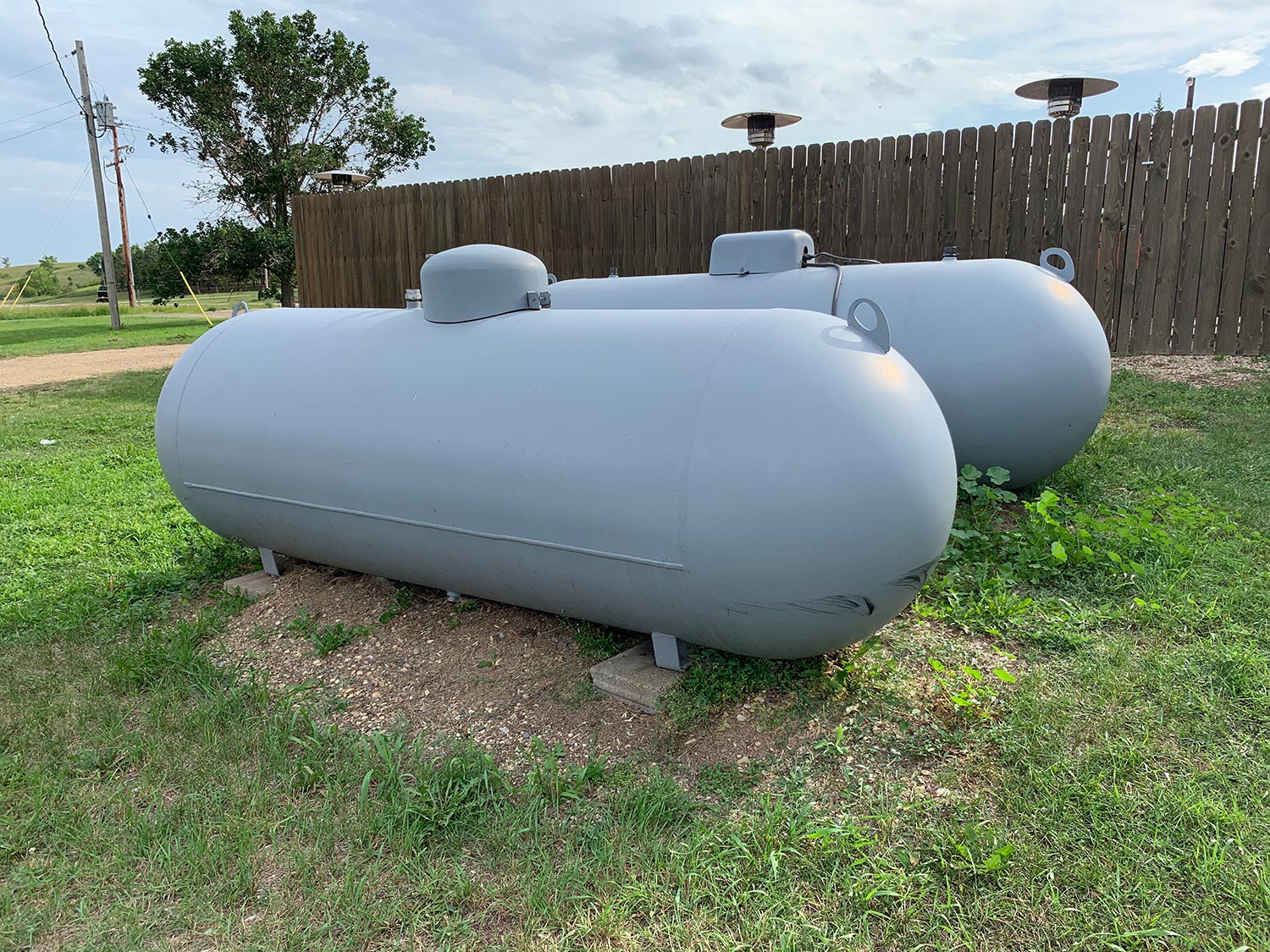
These tanks are the most commonly installed residential propane tank. It ensures that you don't have to bother with refills that often.
500-gallon tanks should be installed at least 10 feet away from the opening of any building. It should also be at least 10 feet away from any ignition source.
It should also be at least 10 feet away from any property line.
1000-gallon propane tanks
Large homes with more than 4,500 square feet of floor area are best served by installing a 1000-gallon tank. It is also the common size installed for agricultural purposes.
1000-gallon tanks should be installed at least 10 feet away from the opening of any building. It should also be at least 10 feet away from any source of ignition.
It should also be at least 10 feet away from any property line.
If two 1000-gallon tanks are installed at least 3 feet from each other, the dimensions provided above increase to 25 feet.
Underground Propane Tank Placement Requirements
According to the NFPA (National Fire Protection Association) LP Gas Code, propane tanks that are installed underground should adhere to the following depth guidelines in addition to the clearance requirements above:
- 100-gallon tanks need a below-ground area that is at least 9′ 6″ length x 4′ width x 44″ depth.
- 500-gallon tanks require an underground area of at least 14′ length x 5′ width x 4′ 6″ depth.
- 1000-gallon tanks will have to be buried in a minimum underground area of 20′ Length x 5′ 6″ Width x 4′ 6″ Depth
Are There Any Permits Required To Install The Pool Heater?
In most states, a building and a plumbing permit are required to install a pool heating system. The installation will then be inspected. In some states, it is required that only a professional can install any type of gas appliance like propane pool heaters.
Find out about the laws that govern the installation of pool heaters in your area, or hire a contractor that can take care of all the necessary permits for you.
How do I properly maintain my pool heater?
A propane pool heater doesn’t need a lot of maintenance. Basic maintenance of your propane pool heater includes keeping it free of debris like leaves and pine needles. Also, make sure there are no rodents nesting inside and chewing on the wiring.
The following guidelines apply only to locations that experience winter months.
Pool heater during winter months
It is important to drain water from your pool heater, pipes, pump, and filter during the winter months. This will help you prevent damage from ice.
Water expands when it freezes, and ice inside your equipment can lead to cracks and leaks when water freezes. This damage will require replacement and is never covered by your warranty.
It is unnecessary to move the pool heater. It is best to leave it where it was installed to prevent damaging it. Protect your pool heater with a winter cover. Winter covers protect the heat pump from snow, ice, and rain.
If you're in the market for a winter cover, this Climate Shield OSCS-HC Pool Heater Cover is available. Check it out on Amazon via this link.
If you want to protect your patio propane tank during inclement weather, check out "Patio Heater Propane Tank Freezing—What To Do?"
Conclusion
Choosing the right propane tank for your pool heater may not be as straightforward as most people initially believe. Computing the right size for the planned monthly usage is necessary to determine the right size of propane tank that will not leave you out in the cold.
It is also important to know the local laws that govern propane tank placement and permits where you live. Hiring a professional can make this simpler for you.
You might like this article about the different inground pool heaters.


